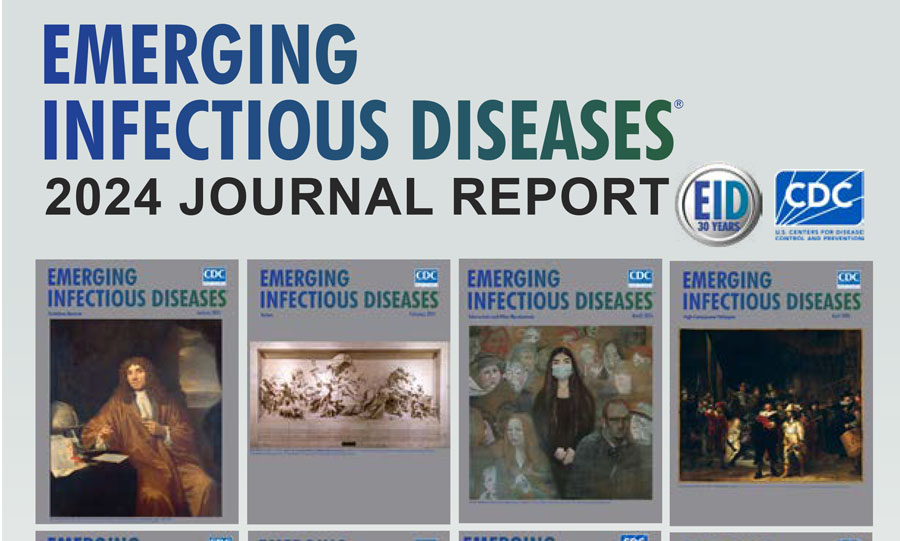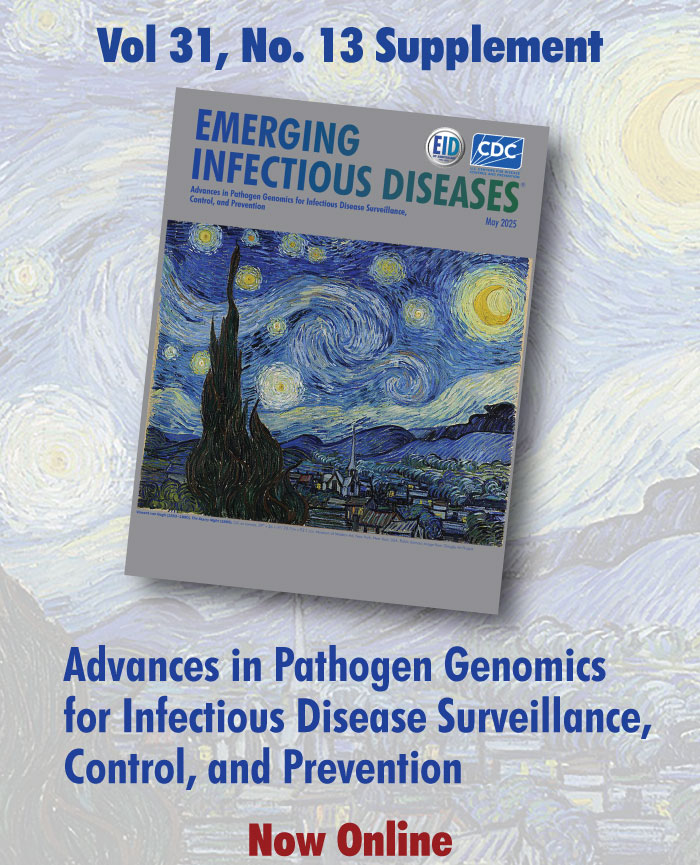Online Reports
Volume 18—2012
Volume 18, Number 12—December 2012
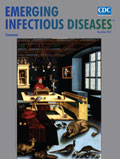
Surveillance of Zoonotic Infectious Disease Transmitted by Small Companion Animals
The One Health paradigm for global health recognizes that most new human infectious diseases will emerge from animal reservoirs. Little consideration has been given to the known and potential zoonotic infectious diseases of small companion animals. Cats and dogs closely share the domestic environment with humans and have the potential to act as sources and sentinels of a wide spectrum of zoonotic infections. This report highlights the lack of a coordinated global surveillance scheme that monitors disease in these species and makes a case for the necessity of developing a strategy to implement such surveillance.
Workshop on Treatment of and Postexposure Prophylaxis for Burkholderia pseudomallei and B. mallei Infection, 2010
The US Public Health Emergency Medical Countermeasures Enterprise convened subject matter experts at the 2010 HHS Burkholderia Workshop to develop consensus recommendations for postexposure prophylaxis against and treatment for Burkholderia pseudomallei and B. mallei infections, which cause melioidosis and glanders, respectively. Drugs recommended by consensus of the participants are ceftazidime or meropenem for initial intensive therapy, and trimethoprim/sulfamethoxazole or amoxicillin/clavulanic acid for eradication therapy. For postexposure prophylaxis, recommended drugs are trimethoprim/sulfamethoxazole or co-amoxiclav. To improve the timely diagnosis of melioidosis and glanders, further development and wide distribution of rapid diagnostic assays were also recommended. Standardized animal models and B. pseudomallei strains are needed for further development of therapeutic options. Training for laboratory technicians and physicians would facilitate better diagnosis and treatment options.
Volume 18, Number 11—November 2012
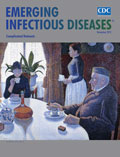
Integrating Genome-based Informatics to Modernize Global Disease Monitoring, Information Sharing, and Response
The rapid advancement of genome technologies holds great promise for improving the quality and speed of clinical and public health laboratory investigations and for decreasing their cost. The latest generation of genome DNA sequencers can provide highly detailed and robust information on disease-causing microbes, and in the near future these technologies will be suitable for routine use in national, regional, and global public health laboratories. With additional improvements in instrumentation, these next- or third-generation sequencers are likely to replace conventional culture-based and molecular typing methods to provide point-of-care clinical diagnosis and other essential information for quicker and better treatment of patients. Provided there is free-sharing of information by all clinical and public health laboratories, these genomic tools could spawn a global system of linked databases of pathogen genomes that would ensure more efficient detection, prevention, and control of endemic, emerging, and other infectious disease outbreaks worldwide.
Challenges and Controversies in Defining Totally Drug-Resistant Tuberculosis
In March 2012, in response to reports of tuberculosis (TB) resistant to all anti-TB drugs, the World Health Organization convened an expert consultation that identified issues to be resolved before defining a new category of highly drug-resistant TB. Proposed definitions are ambiguous, and extensive drug resistance is encompassed by the already defined extensively drug-resistant (XDR) TB. There is no evidence that proposed totally resistant TB differs from strains encompassed by XDR TB. Susceptibility tests for several drugs are poorly reproducible. Few laboratories can test all drugs, and there is no consensus list of all anti-TB drugs. Many drugs are used off-label for highly drug resistant TB, and new drugs formulated to combat resistant strains would render the proposed category obsolete. Labeling TB strains as totally drug resistant might lead providers to think infected patients are untreatable. These challenges must be addressed before defining a new category for highly drug-resistant TB.
Volume 18, Number 8—August 2012
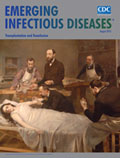
Infectious Disease Transmission during Organ and Tissue Transplantation
Infectious disease transmission through organ and tissue transplantation has been associated with severe complications in recipients. Determination of donor-derived infectious risk associated with organ and tissue transplantation is challenging and limited by availability and performance characteristics of current donor epidemiologic screening (e.g., questionnaire) and laboratory testing tools. Common methods and standards for evaluating potential donors of organs and tissues are needed to facilitate effective data collection for assessing the risk for infectious disease transmission. Research programs can use advanced microbiological technologies to define infectious risks posed by pathogens that are known to be transplant transmissible and provide insights into transmission potential of emerging infectious diseases for which transmission characteristics are unknown. Key research needs are explored. Stakeholder collaboration for surveillance and research infrastructure is required to enhance transplant safety.
Volume 18, Number 4—April 2012
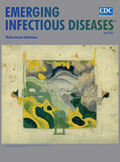
Multidisciplinary and Evidence-based Method for Prioritizing Diseases of Food-producing Animals and Zoonoses
To prioritize 100 animal diseases and zoonoses in Europe, we used a multicriteria decision-making procedure based on opinions of experts and evidence-based data. Forty international experts performed intracategory and intercategory weighting of 57 prioritization criteria. Two methods (deterministic with mean of each weight and probabilistic with distribution functions of weights by using Monte Carlo simulation) were used to calculate a score for each disease. Consecutive ranking was established. Few differences were observed between each method. Compared with previous prioritization methods, our procedure is evidence based, includes a range of fields and criteria while considering uncertainty, and will be useful for analyzing diseases that affect public health.
